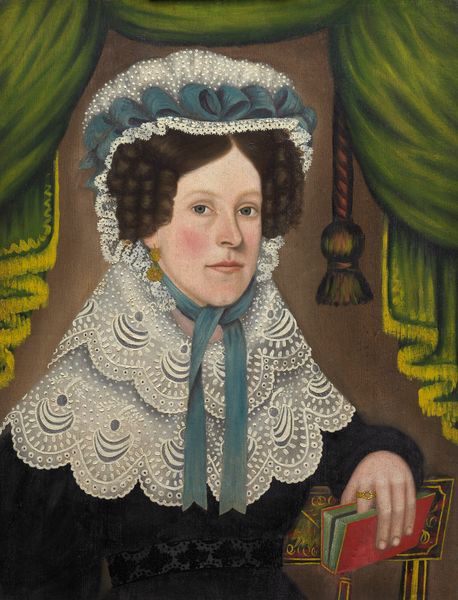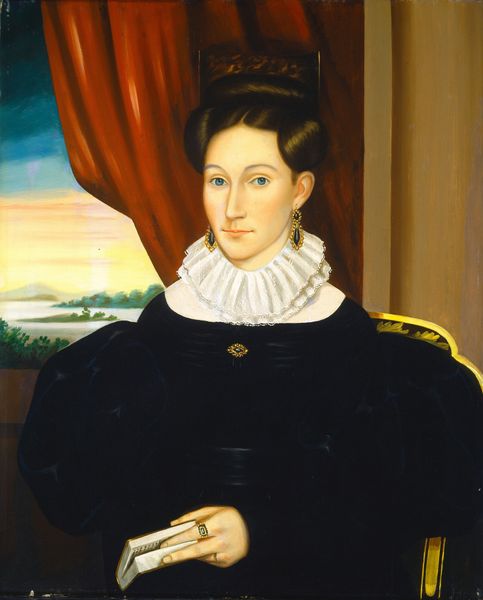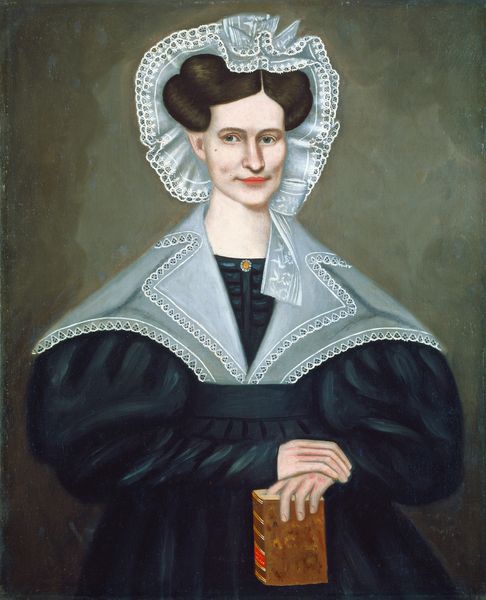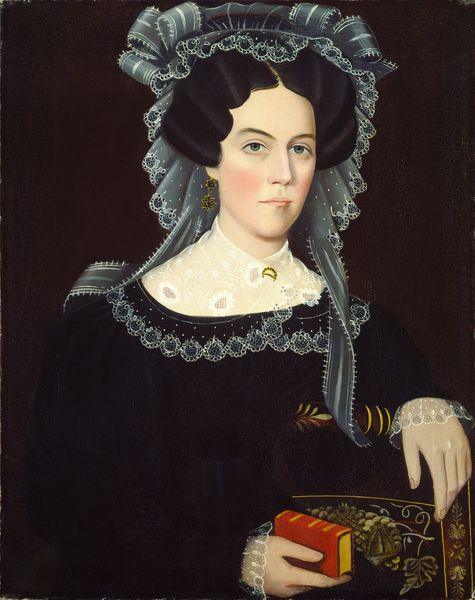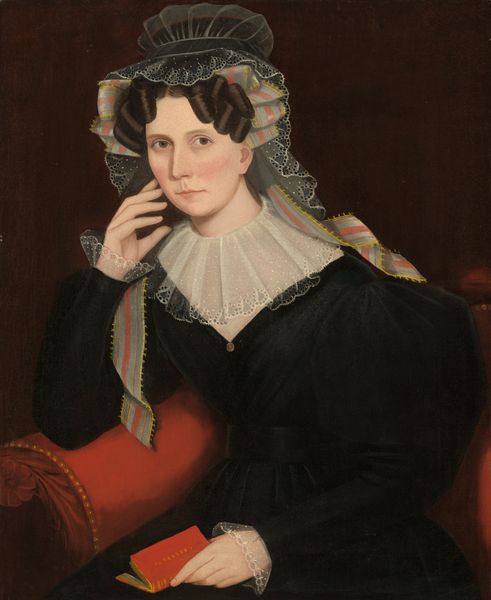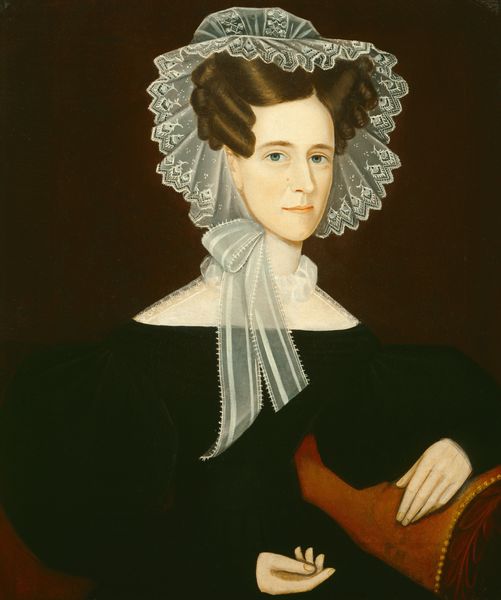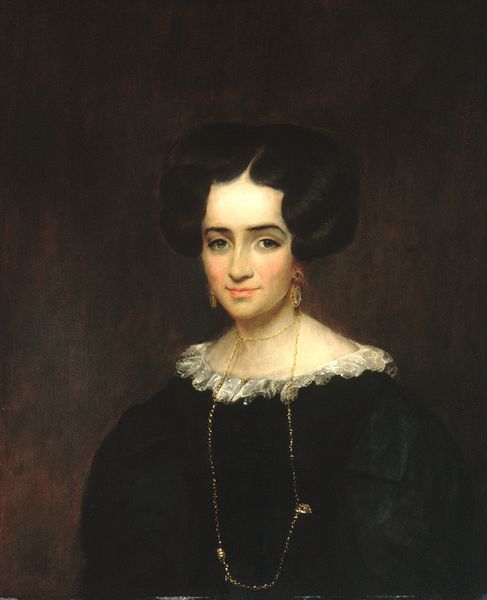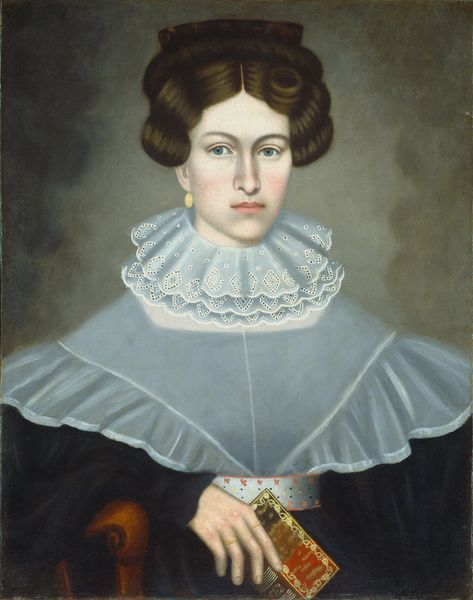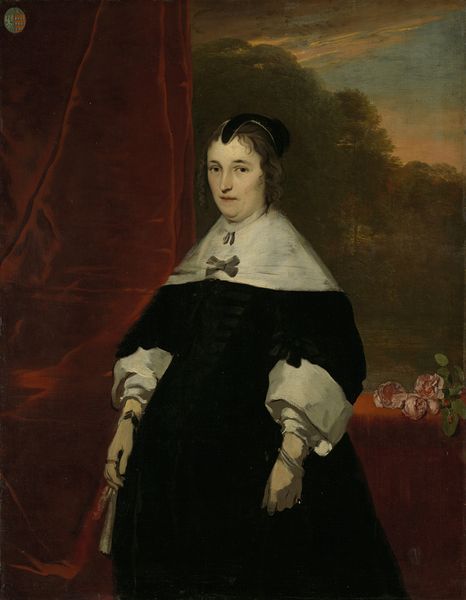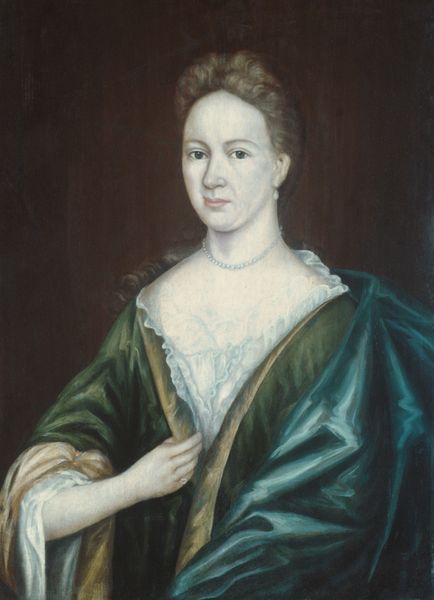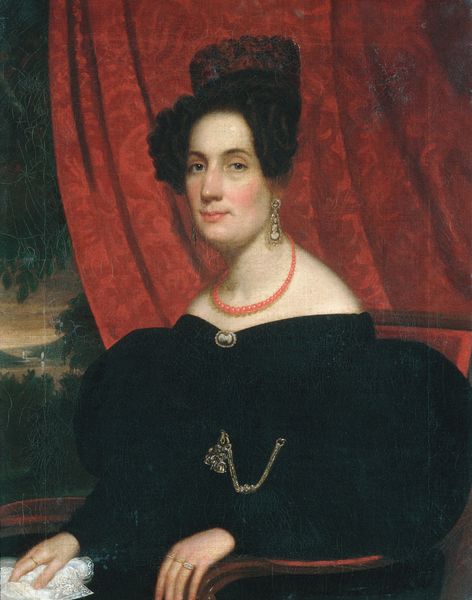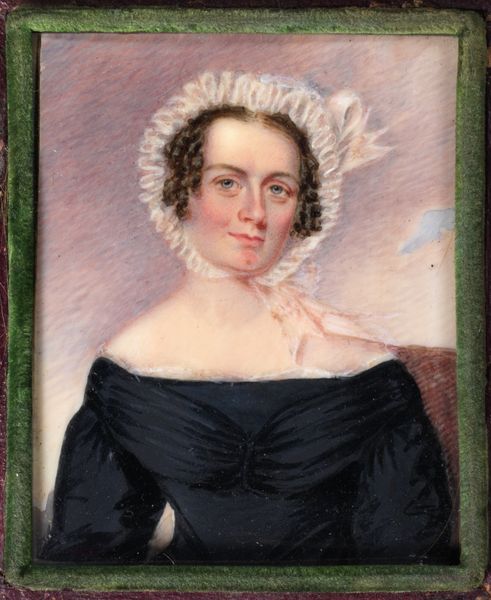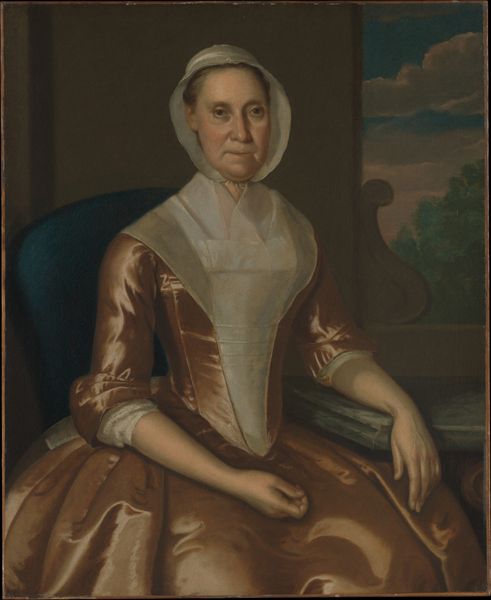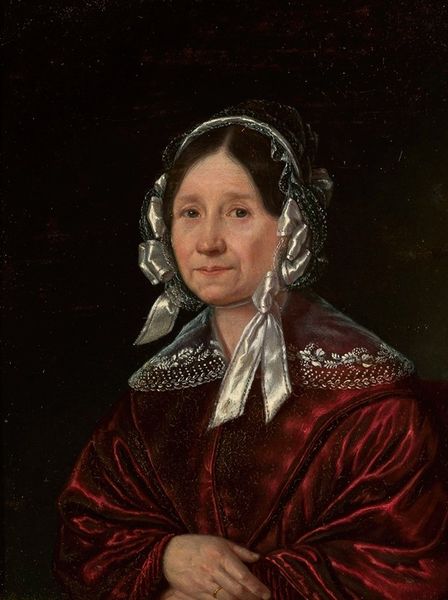
Woman with a Green Book (Louisa Gallond Cook) 1838
0:00
0:00
painting
#
portrait
#
folk-art
#
painting
#
folk-art
#
romanticism
#
united-states
Dimensions: 88.9 × 74.3 cm (35 × 29 1/4 in.)
Copyright: Public Domain
Editor: So, here we have "Woman with a Green Book (Louisa Gallond Cook)," painted by Erastus Salisbury Field in 1838. It’s an oil on canvas currently housed at the Art Institute of Chicago. There's a definite formality to this portrait, but something about it feels...grounded, relatable, like it reflects something about American life at the time. How do you see this artwork through a historical lens? Curator: This portrait speaks volumes about the emerging middle class and its aspirations in the antebellum United States. The subject's clothing, the book, even the landscape backdrop—they're all carefully constructed symbols of status and cultivation. Notice the backdrop is clearly fabricated – it's a studio, and an illusion. Do you think this signifies a democratization of portraiture? Editor: That's an interesting thought. Yes, maybe it democratizes the *idea* of portraiture and who is 'worthy' of one, even if access wasn’t completely equal. What would a historian make of her choice of holding a book, then? Curator: Precisely! The book serves as a crucial signifier of literacy, learning, and piety—all virtues highly valued and increasingly accessible to women in this period, at least in certain social strata. We might also consider who commissioned this work, and the motivations behind it. Editor: So, it is communicating an elevated status and character for a specific audience, through its display? What is being advertised, virtue or prosperity? Curator: Exactly. It’s about broadcasting respectability. Look at the calculated combination of modesty and subtle affluence, then consider the developing art market and its evolving public role. Does that change your initial impression? Editor: Absolutely! It felt relatable before, but now I understand that its approachability is deceptive. It's meticulously crafted to project an image. Curator: And the rise of institutions like the Art Institute cemented these representations in the American visual cannon, influencing perceptions for generations to come. It encourages us to think critically about who gets represented, and how their stories are framed. Editor: Fascinating. I came in thinking about personal expression, and now I see it's so deeply rooted in social structures and power dynamics. Thanks for untangling that.
Comments
No comments
Be the first to comment and join the conversation on the ultimate creative platform.
